Milwaukee M12 2467-21 Handleiding
Milwaukee
Schroefmachine
M12 2467-21
Bekijk gratis de handleiding van Milwaukee M12 2467-21 (11 pagina’s), behorend tot de categorie Schroefmachine. Deze gids werd als nuttig beoordeeld door 65 mensen en kreeg gemiddeld 4.7 sterren uit 33 reviews. Heb je een vraag over Milwaukee M12 2467-21 of wil je andere gebruikers van dit product iets vragen? Stel een vraag
Pagina 1/11

OPERATOR'S MANUAL
MANUEL de L'UTILISATEUR
MANUAL del OPERADOR
Cat. No.
No de cat.
2467-20
M12™ 1/4" HEX RIGHT ANGLE IMPACT DRIVER
TOURNEVIS HEXAGONALE À PERCUSSION À ANGLE DROIT DE 6
MM (1/4")
M12™
DESTORNILLADOR HEXAGONAL DE IMPACTO DE ÁNGULO RECTO
M12™
DE 6 MM (1/4")
TO REDUCE THE RISK OF INJURY, USER MUST READ AND UNDERSTAND OPERATOR'S
MANUAL.
AFIN DE RÉDUIRE LE RISQUE DE BLESSURES, L'UTILISATEUR DOIT LIRE ET BIEN
COMPRENDRE LE MANUEL DE L'UTILISATEUR.
PARA REDUCIR EL RIESGO DE LESIONES, EL USUARIO DEBE LEER Y ENTENDER EL
MANUAL DEL OPERADOR.

23
BATTERY TOOL USE AND CARE
PERSONAL SAFETY
GENERAL POWER TOOL SAFETY WARNINGS
WORK AREA SAFETY
ELECTRICAL SAFETY
POWER TOOL USE AND CARE
• Keep work area clean and well lit. Cluttered or
dark areas invite accidents.
• Do not operate power tools in explosive atmos-
pheres, such as in the presence of fl ammable
liquids, gases or dust. Power tools create sparks
which may ignite the dust or fumes.
• Keep children and bystanders away while op-
erating a power tool. Distractions can cause you
to lose control.
• Power tool plugs must match the outlet. Never
modify the plug in any way. Do not use any
adapter plugs with earthed (grounded) power
tools. Unmodifi ed plugs and matching outlets will
reduce risk of electric shock.
• Avoid body contact with earthed or grounded
surfaces, such as pipes, radiators, ranges and
refrigerators. There is an increased risk of electric
shock if your body is earthed or grounded.
• Do not expose power tools to rain or wet condi-
tions. Water entering a power tool will increase the
risk of electric shock.
• Do not abuse the cord. Never use the cord for
carrying, pulling or unplugging the power tool.
Keep cord away from heat, oil, sharp edges
or moving parts. Damaged or entangled cords
increase the risk of electric shock.
• When operating a power tool outdoors, use an
extension cord suitable for outdoor use. Use of
a cord suitable for outdoor use reduces the risk of
electric shock.
• If operating a power tool in a damp location is
unavoidable, use a ground fault circuit inter-
rupter (GFCI) protected supply. Use of an GFCI
reduces the risk of electric shock.
• Stay alert, watch what you are doing and use
common sense when operating a power tool. Do
not use a power tool while you are tired or under
the infl
uence of drugs, alcohol or medication.
A
moment of inattention while operating power tools
may result in serious personal injury.
• Use personal protective equipment. Always
wear eye protection. Protective equipment such
as a dust mask, non-skid safety shoes, hard hat or
hearing protection used for appropriate conditions
will reduce personal injuries.
• Prevent unintentional starting. Ensure the
switch is in the o-position before connecting
to power source and/or battery pack, picking
up or carrying the tool. Carrying power tools with
your fi nger on the switch or energizing power tools
that have the switch on invites accidents.
• Remove any adjusting key or wrench before
turning the power tool on. A wrench or a key left
attached to a rotating part of the power tool may
result in personal injury.
• Do not overreach. Keep proper footing and bal-
ance at all times. This enables better control of the
power tool in unexpected situations.
• Dress properly. Do not wear loose clothing or
jewelry. Keep your hair and clothing away from
moving parts. Loose clothes, jewelry or long hair
can be caught in moving parts.
• If devices are provided for the connection of
dust extraction and collection facilities, ensure
these are connected and properly used. Use of
dust collection can reduce dust-related hazards.
• Do not let familiarity gained from frequent use of
tools allow you to become complacent and ig-
nore tool safety principles. A careless action can
cause severe injury within a fraction of a second.
• Do not force the power tool. Use the correct
power tool for your application. The correct
power tool will do the job better and safer at the
rate for which it was designed.
• Do not use the power tool if the switch does not
turn it on and o. Any power tool that cannot be
controlled with the switch is dangerous and must
be repaired.
• Disconnect the plug from the power source and/
or remove the battery pack, if detachable, from
the power tool before making any adjustments,
changing accessories, or storing power tools.
Such preventive safety measures reduce the risk
of starting the power tool accidentally.
• Store idle power tools out of the reach of chil-
dren and do not allow persons unfamiliar with
the power tool or these instructions to operate
the power tool. Power tools are dangerous in the
hands of untrained users.
• Maintain power tools and accessories. Check
for misalignment or binding of moving parts,
breakage of parts and any other condition that
may aect the power tool’s operation. If dam-
aged, have the power tool repaired before use.
Many accidents are caused by poorly maintained
power tools.
• Keep cutting tools sharp and clean. Properly
maintained cutting tools with sharp cutting edges
are less likely to bind and are easier to control.
• Use the power tool, accessories and tool bits
etc. in accordance with these instructions, tak-
ing into account the working conditions and
the work to be performed. Use of the power tool
for operations different from those intended could
result in a hazardous situation.
• Keep handles and grasping surfaces dry, clean
and free from oil and grease. Slippery handles
and grasping surfaces do not allow for safe handling
and control of the tool in unexpected situations.
• Recharge only with the charger specifi ed by the
manufacturer. A charger that is suitable for one
WARNING Read all safety warnings, instructions, illustrations and specifi cations provided
with this power tool. Failure to follow all instructions listed below may result in electric shock, fi re
and/or serious injury. Save all warnings and instructions for future reference. The term "power tool" in
the warnings refers to your mains-operated (corded) power tool or battery-operated (cordless) power tool.

45
• Hold the power tool by insulated gripping
surfaces, when performing an operation
where the fastener may contact hidden wiring.
Fasteners contacting a “live” wire may make
exposed metal parts of the power tool “live” and
could give the operator an electric shock.
• Maintain labels and nameplates. These carry
important information. If unreadable or missing,
contact a MILWAUKEE service facility for a free
replacement.
• WARNING Some dust created by power sanding,
sawing, grinding, drilling, and other construction
activities contains chemicals known to cause
cancer, birth defects or other reproductive harm.
Some examples of these chemicals are:
• lead from lead-based paint
• crystalline silica from bricks and cement and
other masonry products, and
• arsenic and chromium from chemically-treated
lumber.
SPECIFIC SAFETY RULES
SYMBOLOGY
WARNING Risk of electric
shock.
Volts
Direct Current
Impacts per Minute Under
Load (IPM)
No Load Revolutions per
Minute (RPM)
CUS
Underwriters Laboratories, Inc.
United States and Canada
SPECIFICATIONS
FUNCTIONAL DESCRIPTION
Cat. No. Volts DC RPM IPM Fastening Torque
2467-20 12 0-2425 0-3300 600 in-lbs
1. " Hex drive chuck1/4
2. Drive head
3. LED
4. Paddle Switch
5. Control Switch
6. Insulated gripping surface
145
2
3
6
SERVICE
type of battery pack may create a risk of fi re when
used with another battery pack.
• Use power tools only with specifi cally desig-
nated battery packs. Use of any other battery
packs may create a risk of injury and fi re.
• When battery pack is not in use, keep it away
from other metal objects, like paper clips, coins,
keys, nails, screws or other small metal objects,
that can make a connection from one terminal
to another. Shorting the battery terminals together
may cause burns or a fi re.
• Under abusive conditions, liquid may be ejected
from the battery; avoid contact. If contact ac-
cidentally occurs, fl ush with water. If liquid con-
tacts eyes, additionally seek medical help. Liquid
ejected from the battery may cause irritation or burns.
• Do not use a battery pack or tool that is dam-
aged or modifi ed. Damaged or modifi ed batteries
may exhibit unpredictable behavior resulting in fi re,
explosion or risk of injury.
• Do not expose a battery pack or tool to fi re
or excessive temperature. Exposure to fi re or
temperature above 265°F (130°C) may cause
explosion.
• Follow all charging instructions and do not
charge the battery pack or tool outside the
temperature range specifi ed in the instructions.
Charging improperly or at temperatures outside
the specifi ed range may damage the battery and
increase the risk of fi re.
• Have your power tool serviced by a qualifi ed
repair person using only identical replacement
parts. This will ensure that the safety of the power
tool is maintained.
• Never service damaged battery packs. Service
of battery packs should only be performed by the
manufacturer or authorized service providers.
Your risk from these exposures varies, depending
on how often you do this type of work. To reduce
your exposure to these chemicals: work in a well
ventilated area, and work with approved safety
equipment, such as those dust masks that are spe-
cially designed to fi lter out microscopic particles.
Attaching and Removing Accessories
1/4" Hex Impact Driver
This impact driver is intended for use with drill and
driver bits with a 1/4" hex shank and ball detent
recess.
1. To attach an accessory, pull the ring out and
insert the shank. Release the ring. It may be
necessary to pull the bit out slightly to engage
the holding mechanism.
2. To remove the accessory, pull out the ring and
remove the accessory. Release the ring.
ASSEMBLY
WARNING Recharge only with the
charger specifi ed for the battery. For specifi c
charging instructions, read the operator’s
manual supplied with your charger and battery.
Inserting/Removing the Battery
To remove the battery, push in the release buttons
and pull the battery pack away from the tool.
To insert the battery, slide the pack into the body
of the tool. Make sure it latches securely into place.
WARNING Use only sockets and other
accessories specifi cally designed for use on
impact drivers. Other sockets and accessories
might shatter or break causing injury.
WARNING Always remove battery
pack before changing or removing acces-
sories. Only use accessories specifically
recommended for this tool. Others may be
hazardous.
OPERATION
WARNING Always remove battery
pack before changing or removing acces-
sories. Only use accessories specifically
recommended for this tool. Others may be
hazardous.
WARNING To reduce the risk of injury,
wear safety goggles or glasses with side
shields.
Fuel Gauge
To determine the amount of charge left in the bat-
tery, pull the trigger. The Fuel Gauge will light up
for 2-3 seconds.
To signal the end of charge, 1 light on the fuel gauge
will fl ash for 2-3 seconds.
Using the Control Switch
The control switch may be set to three positions:
forward, reverse and lock. Always allow the motor
to come to a complete stop before using the control
switch to avoid damage to the tool.
For forward (clockwise) rotation, push in the control
switch from the right side of the tool . Check the ►
direction of rotation before use.
For reverse (counterclockwise) rotation, push in
the control switch from the left side of the tool ◄.
Check direction of rotation before use.
To lock the trigger, push the control switch to the
center position. The trigger will not work while the
control switch is in the center locked position. Always
lock the trigger or remove the battery pack before
performing maintenance, changing accessories,
storing the tool and any time the tool is not in use.
Product specificaties
| Merk: | Milwaukee |
| Categorie: | Schroefmachine |
| Model: | M12 2467-21 |
Heb je hulp nodig?
Als je hulp nodig hebt met Milwaukee M12 2467-21 stel dan hieronder een vraag en andere gebruikers zullen je antwoorden
Handleiding Schroefmachine Milwaukee
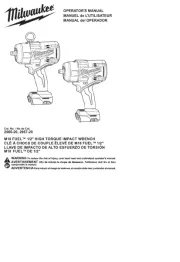
14 Juli 2025
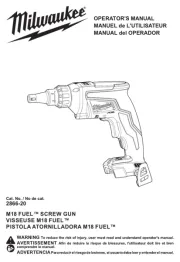
14 Juli 2025

15 Juni 2025
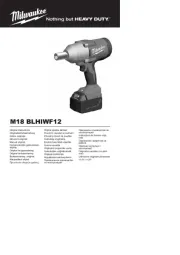
15 Juni 2025
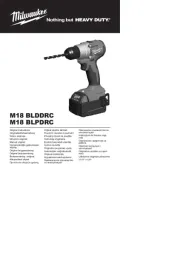
15 Juni 2025
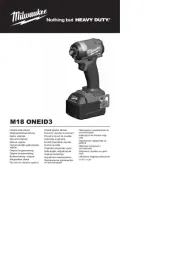
4 April 2025

4 April 2025
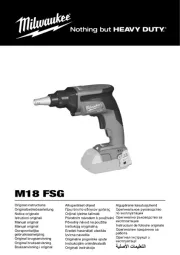
4 April 2025
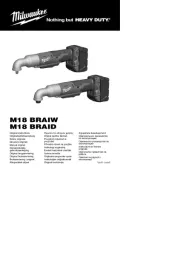
4 April 2025
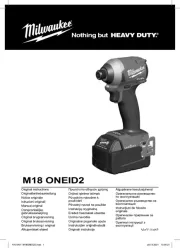
4 April 2025
Handleiding Schroefmachine
- Ryobi
- Hilti
- Vigor
- Park Tool
- Bavaria By Einhell
- Festool
- Kress
- HOTO
- Ferm
- Craftsman
- Wera
- Elu
- Wiha
- EMOS
- Trotec
Nieuwste handleidingen voor Schroefmachine
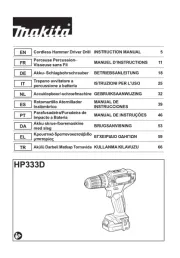
15 Juli 2025
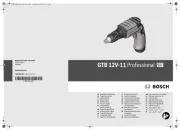
15 Juli 2025
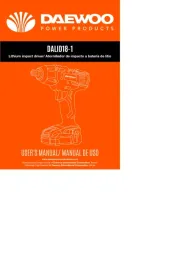
5 Juli 2025
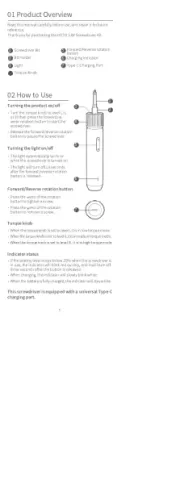
5 Juli 2025
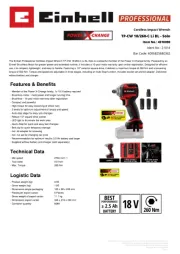
5 Juli 2025
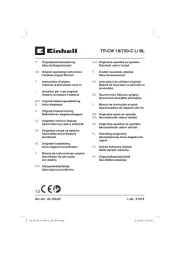
4 Juli 2025

4 Juli 2025

4 Juli 2025

4 Juli 2025
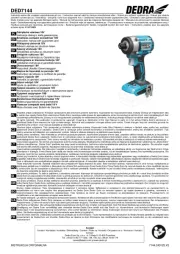
4 Juli 2025